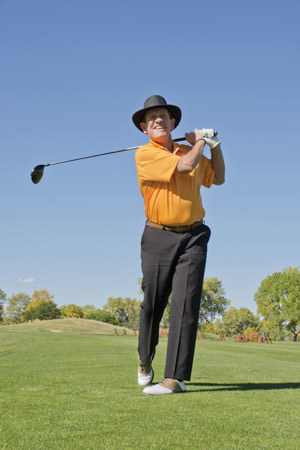17 for ’17 – Tips from 17 Colorado Instructors
Make BFP Your BFF
Nearly every amateur golfer’s practice swing is more efficient, with better tempo and balance, than the one he or she uses to hit the ball. The culprit? Trying to hit the golf ball, rather than just swinging the club, engages the wrong muscle groups, reduces clubhead speed and leads to lunging and loss of balance.
Correct this by focusing on a balanced finish position (BFP). A BPF means nearly all of your weight is on your target-side foot, with a little remaining on the big toe of your back foot; your chest and navel face the target; and the back of your top hand is close to the opposite ear with your arms relaxed and elbows chest high.
If your finish position has good form and balance, odds are the mechanics that produced that result must have occurred.
Learning to swing into this BFP is easiest when swinging at a tee, not a golf ball. Start in your address position and swing through impact area into BFP, then swing from BFP all the way to top of backswing and then swing slowly down and through the impact area back to the BFP. As your swing becomes smoother and your balance better, gradually increase clubhead speed.
Dennis C. Murray,
PGA Certified Teaching Professional,
Valley Country Club, Centennial


